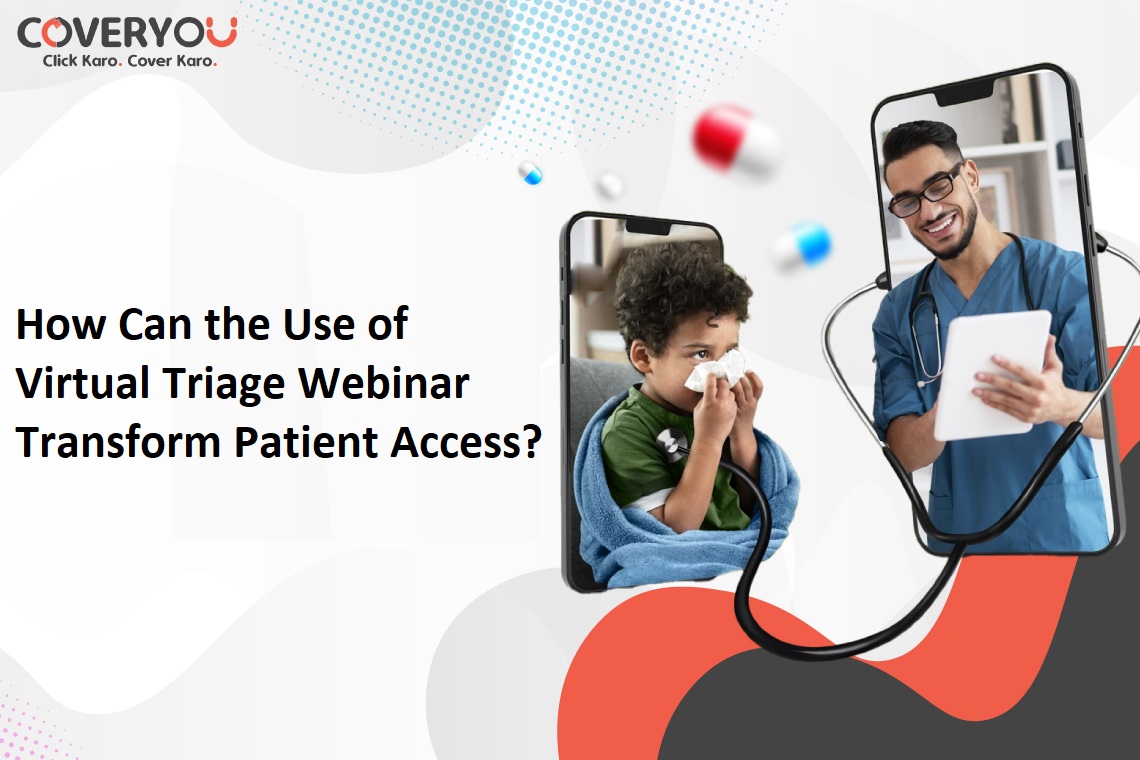Healthcare systems across the world are striving to improve access to patients and smooth out services. Virtual triage is going to play a vital role in this area. The webinar covers changing patient access through this method, focusing on the benefits, ways to do the implementation, and examples of applications in real life.
What is Virtual Triage?
Virtual triage is when digital tools and platforms are used to assess the conditions of patients before visiting a healthcare facility. This allows health providers to prioritize care according to the acuity of the patient’s condition. Therefore allowing for the proper allocation of urgent care to those in critical conditions.
With the growing influence of digital healthcare, virtual triage will soon become a common phenomenon. The Digital Health market is anticipated to generate a revenue of $4.85 billion in 2024. With an expected annual growth rate (CAGR) of 12.81% from 2024 to 2029. The market volume is projected to reach $8.86 billion by 2029. This highlights the significant shift in the sentiment among people towards digital healthcare such as virtual triage.
Benefits of Virtual Triage:
- Organized Improved Access to Patient Care: This system will provides immediate access to healthcare assessment to the patient, thereby eliminating the need for a physical visit and reducing long wait times.
- Effective Resource Allocation: The acuity of cases, if known in advance, can facilitate healthcare facilities with proper distribution of resources, so that critical cases get precedence over others.
- Reduced Healthcare Costs: Avoidance of unplanned and avoidable visits to hospitals and admissions can reduce healthcare costs remarkably for providers and patients alike.
- Improved Patient Satisfaction: Ease and speed of access to health facilities, thus, correlate positively with better patient satisfaction and health outcomes in general.
Virtual Triage Implementation:
- Selecting the appropriate platform: Choose a solid and user-friendly virtual triage platform, integrated into the existing healthcare systems and electronic health records of Pieces. Healthcare providers and staff should be appropriately trained regarding the use of virtual triage tools and accurate interpretation of the gleaned data. There is a requirement to educate patients too, about the use of such tools. With specific benefits and simplicity associated with such tools.
- Data Security and Privacy: Establish robust data security processes to ensure integrity and safety of patient data, in accordance with current legal provisions.
Real-World Applications:
- Emergency Departments: The application of virtual triage will enable the determination of the condition of patients. Even before they get to the emergency department, which helps reduce overcrowding and long waiting times in emergency departments.
- Primary Care: Virtual triage will enable general practitioners to assess patients to advise remotely and book appointments where necessary.
- Specialty Clinics: Such specialty clinics definitely have the capability to queue up consultations and follow-up visits. Based on the severity and seriousness of the cases of their patients.
- Telehealth Services: With the integration of virtual triage and telehealth services, comprehensive treatment from initial evaluation to real treatment and further follow-up can be undertaken.
Case Studies:
Case Study 1: ER Overcrowding Reduction
A busy urban hospital implemented a virtual triage system. For the sorting of patients before their actual arrival in the emergency room. The scheme reduces ER wait time by 30% and improves patient outcomes by prioritizing critical cases. For treatment and referring less critical cases for primary care or telehealth visits.
Case Study 2: Improving Access to Primary Care:
A regional health network implemented This system as a means of managing patient flow in its primary care clinics. Patients were put through an app to describe their symptoms and receive an initial advisory. This system helped triage the patients to the right care setting, avoiding the need for unnecessary visits and ensuring timely access to care.
Q&A Session:
The participants will have an opportunity to ask questions and share their experiences during an interactive Q&A session. In terms of challenges and successes in implementing a virtual triage strategy.
Conclusion:
Virtual triage is what has shaped timely, effective, and cost-efficient access to healthcare services. As time spent with patients is crucial, this systems will improve the patient experience. Like satisfaction, resource use, and general health outcomes. Join us in this webinar on how it can revolutionize healthcare practice and strategy management for improved patient accessibility.
Read More – Exploring the Impact of Telemedicine on Professional Indemnity Insurance for Doctors!

















